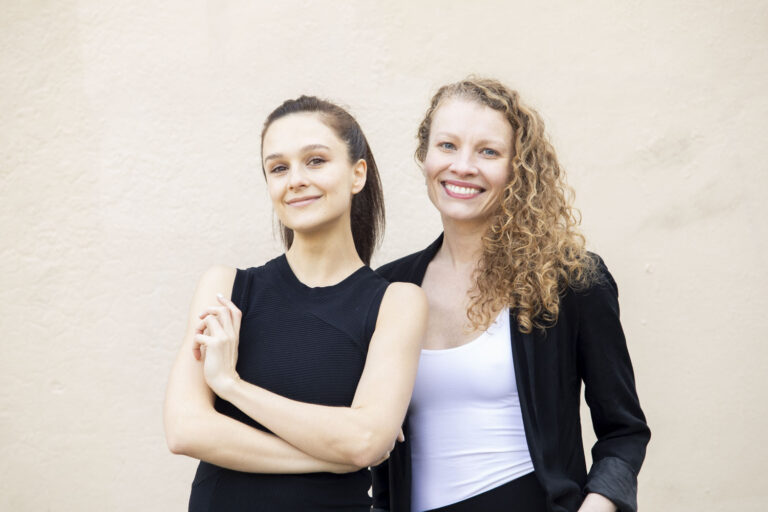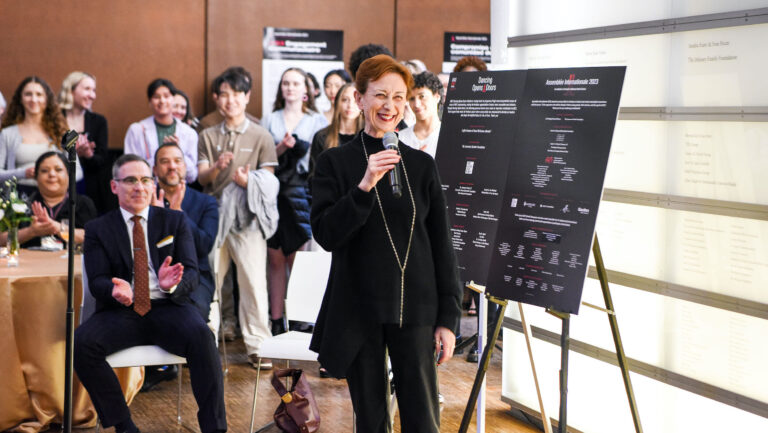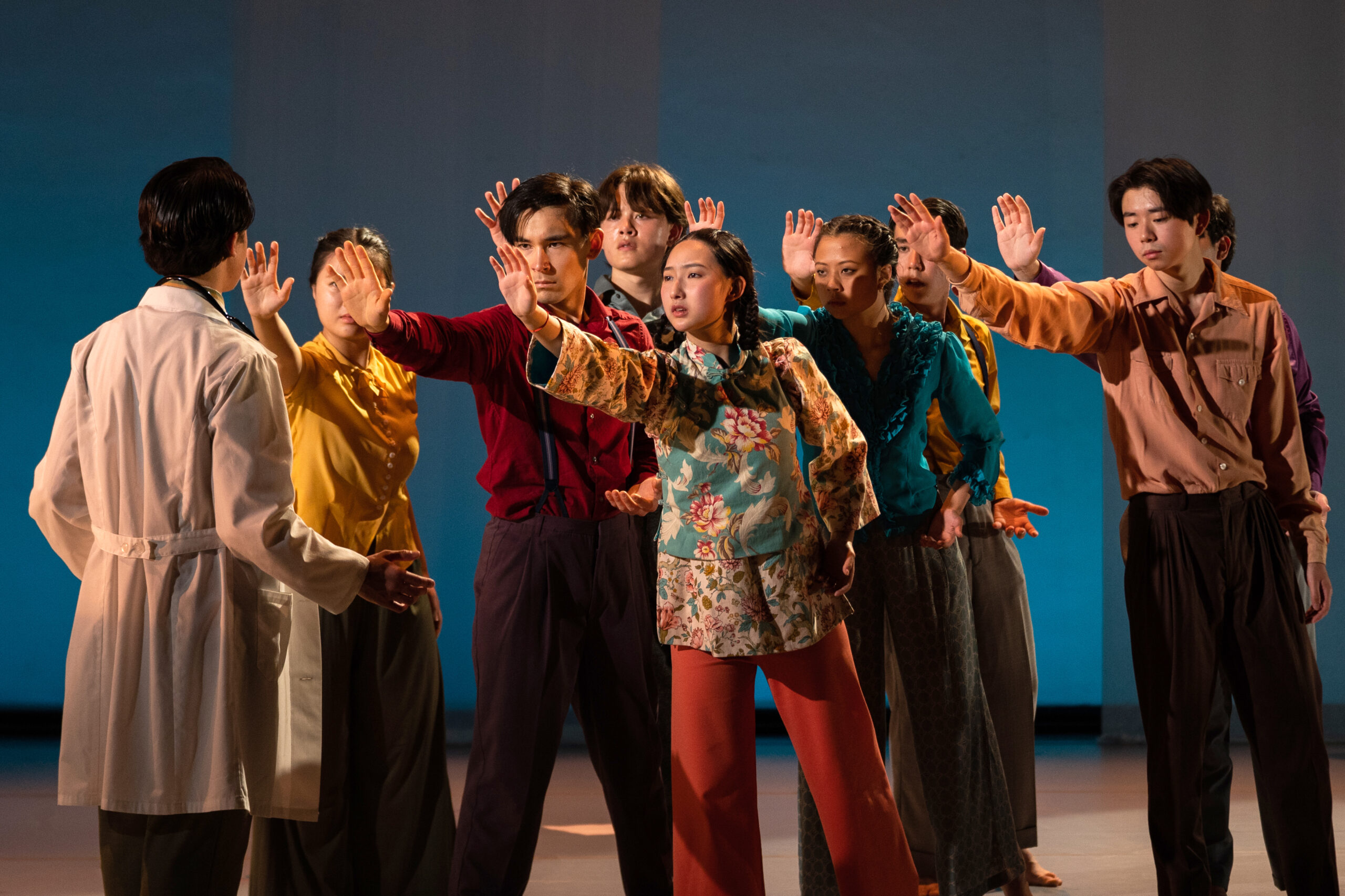
“You go through such a journey in college, and I didn’t realize how much I would unpack my own identity and ‘Asian-ness’ during these four years,” reflects Eileen Kim, a 2023 graduate of the University of Southern California’s Glorya Kaufman School of Dance. Asian American and Pacific Islander Heritage Month, which took place in May, has just come to a close. However, more AAPI university students and faculty members are creating programs throughout the school year that build bridges with AAPI artists, promote community, and share Asian history.
“The conversation is still very fresh and new on this public level in the field,” says Achinta S. McDaniel, a professor at USC Kaufman and artistic director of Blue13 Dance Company in Los Angeles. “It’s still sort of the first time that we are able to articulate in these affinity spaces all of these shared issues and the ways in which we grapple with identity, so continuing to create forums is important.”
Embracing Identity
In the fall of 2022, USC Kaufman saw its highest number of AAPI freshmen. McDaniel, along with fellow Kaufman faculty members Bonnie Oda Homsey and Tiffany Bong, organized a panel in September, the first of a series aimed at creating platforms of visibility for AAPI dance artists. That panel, “Beyond the Monolith: Representations of AAPI Artists in Dance,” featured film screenings, performances, and a discussion with choreographers Yin Yue and Peter Chu.
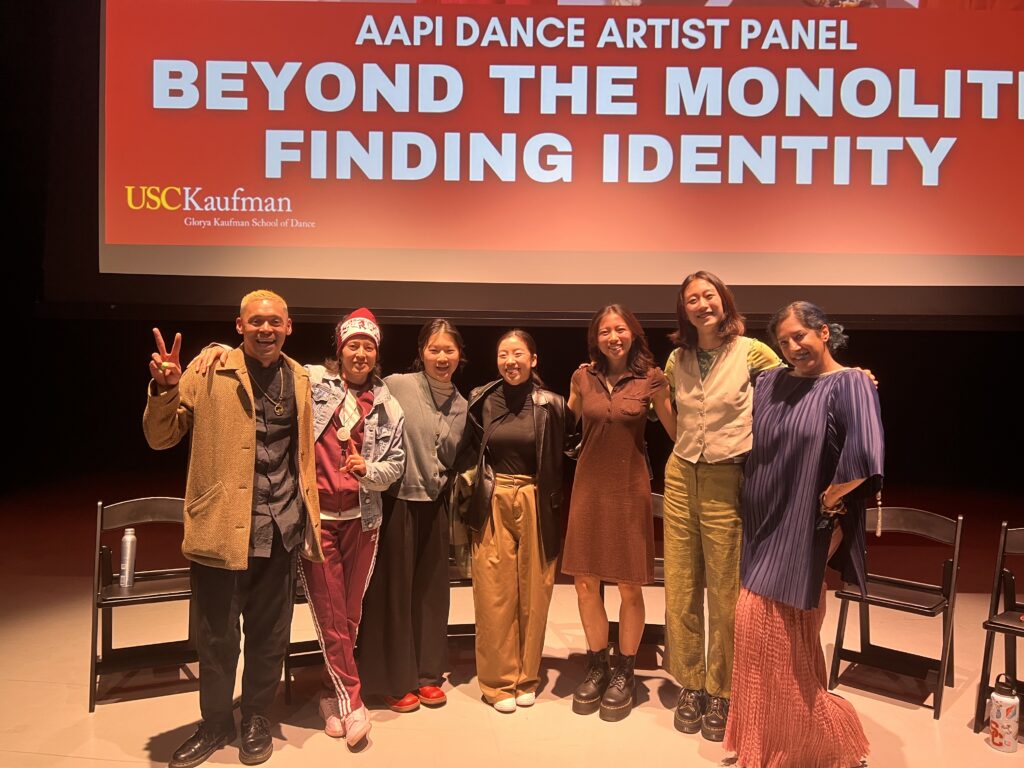
As the number of AAPI students at Kaufman grew, Kim and Valerie Chen, who just finished her junior year, created a group called “Asians at Kaufman” to foster community amongst the AAPI students. Members are included in a texting group, and they held a potluck gathering at the beginning of the school year to welcome the incoming AAPI freshmen. In April, Kim and Chen organized the second artist panel, “Beyond the Monolith: Finding Identity,” which featured AAPI dancers Sorah Yang, Asia Yu, Jay Carlon, and Stephanie Dai. Hearing them speak about their respective experiences was stirring for many of the students. “One of my close friends said that it made him really emotional because he realized there was a space where people could understand our stories,” says Chen. “One question that really resonated with the group that night was ‘How do I know I’m Asian enough?’ The panelists answered that everything you do isAsian enough.”
While completing her MFA in dance at The Ohio State University, Japanese international student Yukina Sato wanted to understand the relationship between her cultural identity and dancemaking. Sato had moved to the U.S. for college in 2016 and received her undergraduate degree from the University of Central Oklahoma. “It was a very white-dominant space,” she says. Sato adds that she noticed “a lot of distinction between my lived experience as Japanese versus what people expected or anticipated from my body and how I behave and communicate. People would ask me, ‘Oh, are you able to teach nihon buyo, traditional Japanese dance?’ I actually never studied it until I got to OSU!”
Sato organized a Space Making Workshop last November at OSU with U.S.-based Japanese artists Nami Yamamoto and Ayako Kato. Like Sato, Yamamoto and Kato emigrated from Japan to pursue their artistic careers. The workshop provided the women with a platform to share their creative journeys, and also lead OSU attendees through samples of their movement practices. “It was empowering to see them holding space to talk about their work,” says Sato. “Asians are a huge category; it’s multidimensional and there are different, unique perspectives. It was important for me to bring these artists who are currently working in the field, who are on the front lines, to share their points of view.” Embodying the artists’ styles also helped challenge any preconceived notions attendees may have had about Japanese dancers, with Sato adding that one of the participants thought they might do “a little bit of martial arts.” “There’s this expectation of ‘Asian artists,’ but then they realized that it’s different, so I liked that they were able to discover new things,” says Sato.
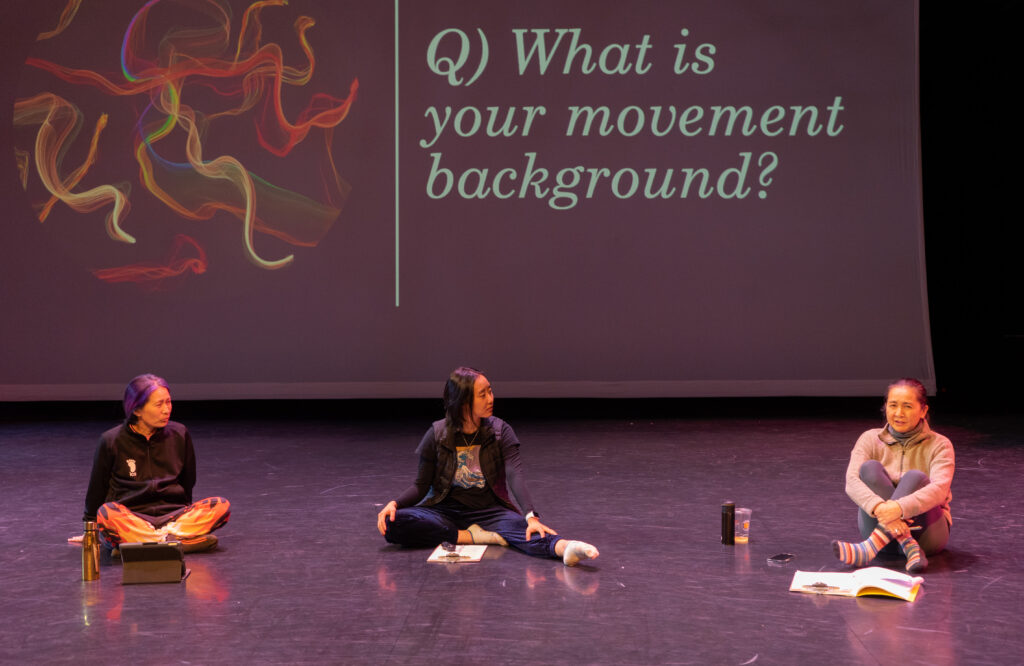
Revisiting History
Learning from the past is an integral part of understanding and appreciating one’s identity, and that of others. At the University of California, Berkeley, undergraduates, graduate students, community members, and faculty have spent the past school year exploring themes such as race, global migration, and incarceration through a multidisciplinary program, A Year on Angel Island. The program featured a series of music and dance performances, exhibitions, public conversations, and courses inspired by the Angel Island Immigration Station. Located in the San Francisco Bay, Angel Island was an entry point for approximately 500,000 immigrants from 80 countries, many in Asia. It was built in 1910 to enforce the Chinese Exclusion Act of 1882, the first significant restriction on free immigration in U.S. history. Many people who arrived at Angel Island were unjustly interrogated and detained.
Among the performances was a restaging of Lenora Lee Dance’s Within These Walls, held in February, by UC Berkeley students. The multimedia presentation integrated contemporary dance with poetry, original music, and video inspired by the experiences of the 170,000 Chinese immigrants on Angel Island between 1910 and 1940.
“It was incredibly powerful. We heard that over and over from the audience,” says Susan Moffat, creative director of the Future Histories Lab at UC Berkeley’s Global Urban Humanities Initiative, one of the sponsors of A Year on Angel Island. “For the nondance students, seeing this kind of dance was a chance to think about the trauma and the history of migration and incarceration in new ways. And those who were dance students did a lot of research on these histories.”
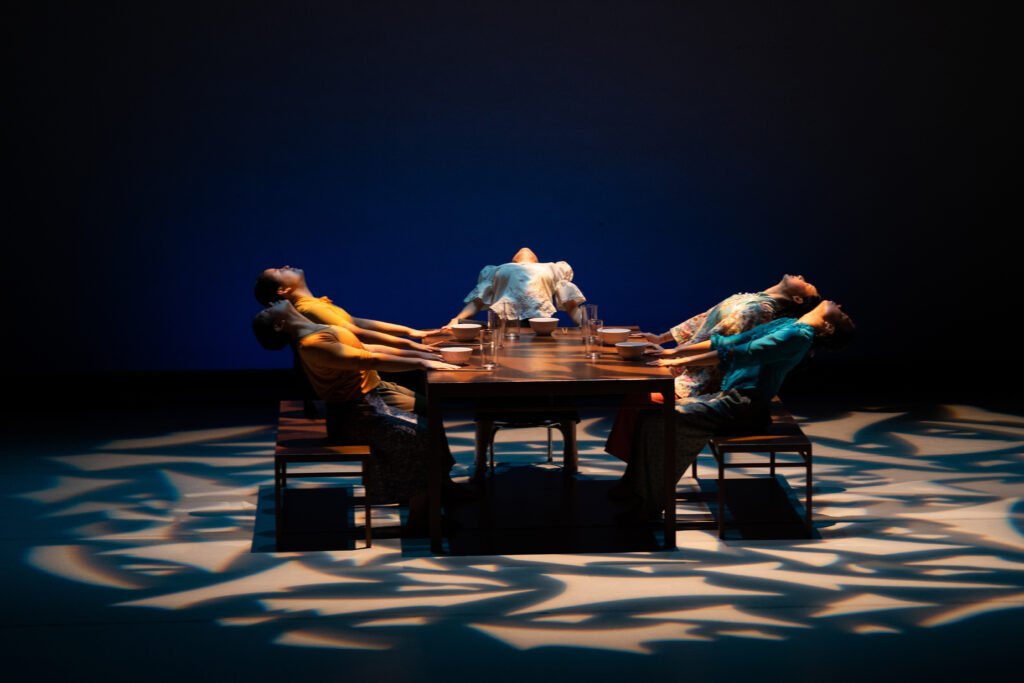
A special Day on Angel Island event held last month took visitors to the site and included a short performance entitled Deep Roots. The piece, choreographed by Jingwen (Caitlin) Han, drew inspiration from traditional Chinese dance and reflected on this question: “Chinese immigrants struggled to adapt and integrate into American society under the pressure of the Chinese Exclusion Act and discrimination … how can you strip your culture from your body?”
“The arts can be such a catalyst,” says Lisa Wymore, professor at UC Berkeley’s department of theater, dance, and performance studies and faculty advisor for Creative Discovery. “Being embodied together and allowing the multiplicity of the arts to influence each other while connecting to historical research and archives; all of a sudden it gets so rich and deep.”
Empowering Spaces
As students and faculty members continue to bring AAPI—and non-AAPI—communities together to start conversations, revisit shared histories, and build connections, it adds tremendous value, particularly to new graduates who are preparing to enter the dance field.
Kim adds, “There’s a huge process of figuring out who you are here [at university], which is a really big blessing before going into the professional industry. Fostering a community where you can speak up is really awesome, and something I found a lot of at Kaufman which empowered me.”



